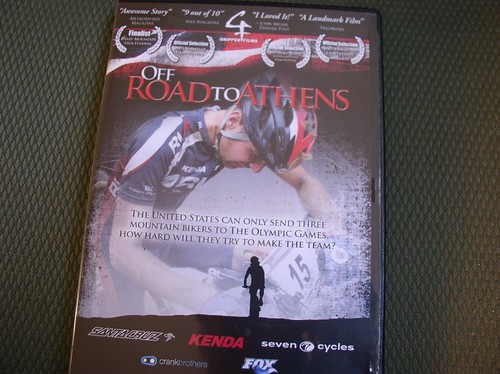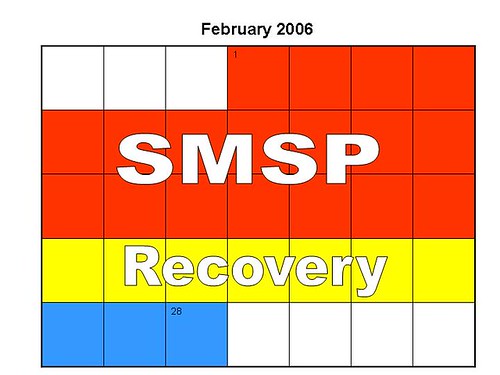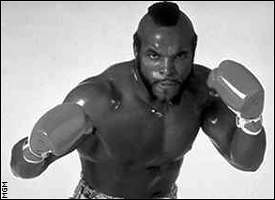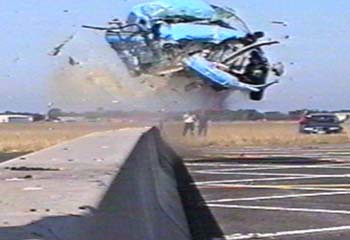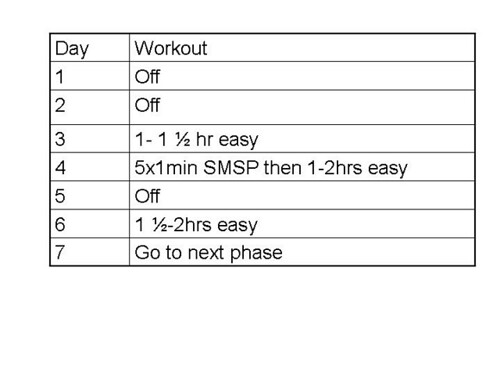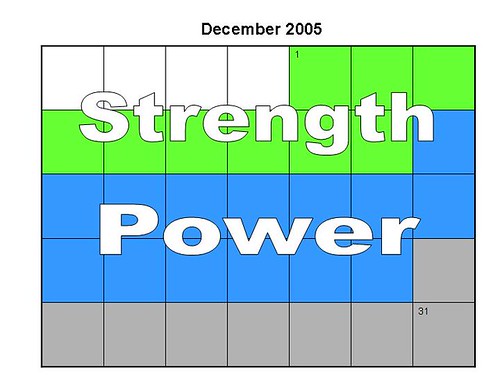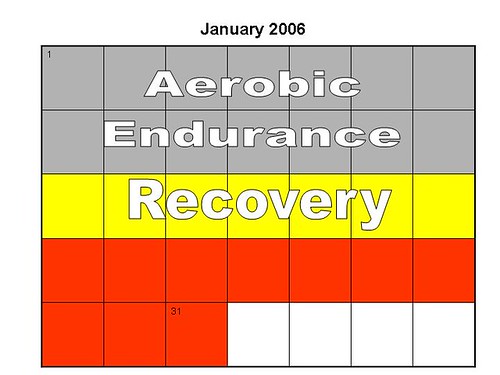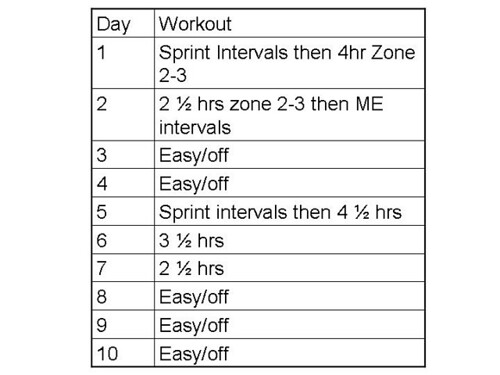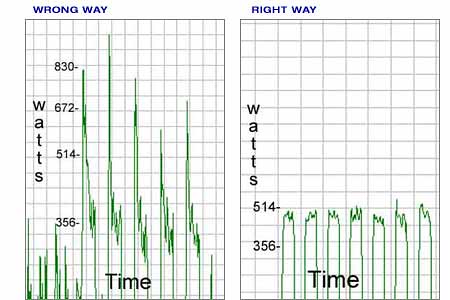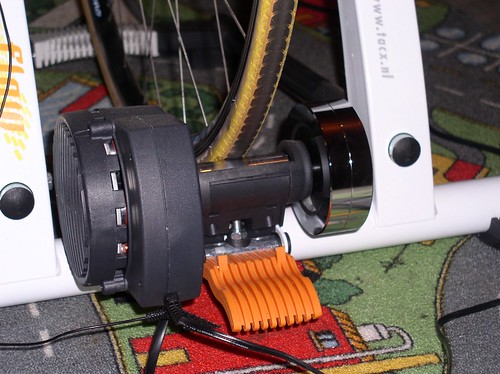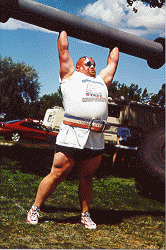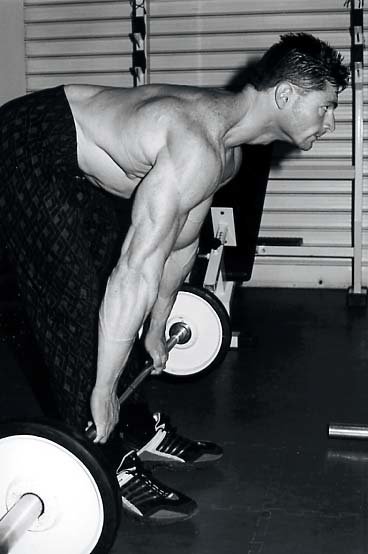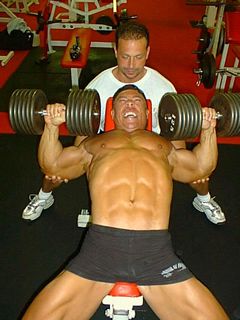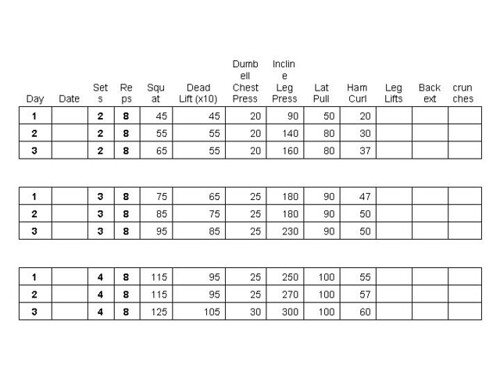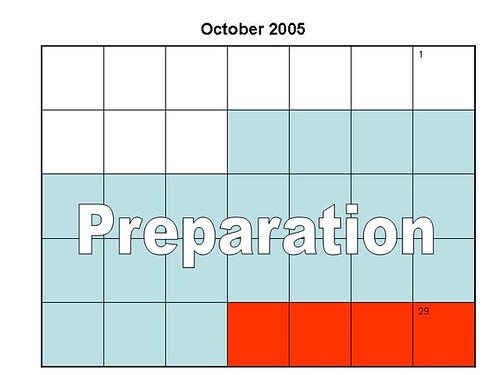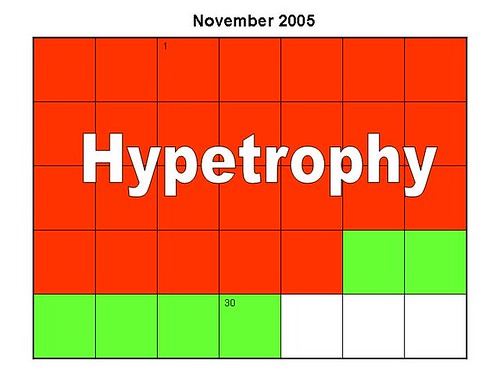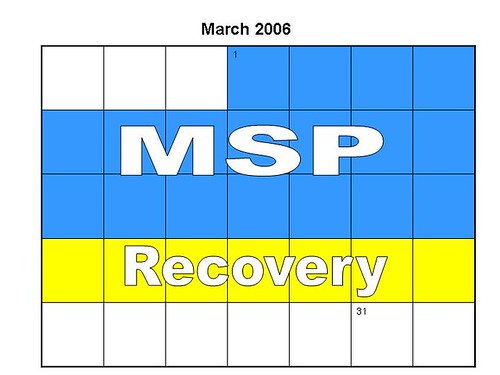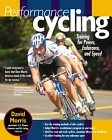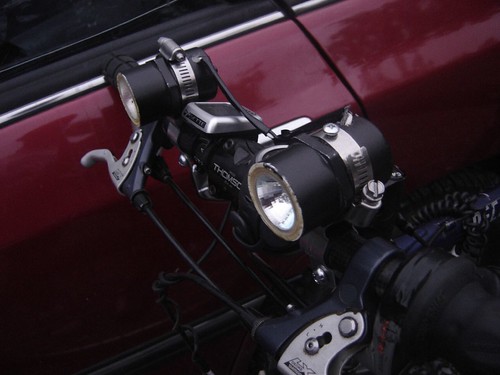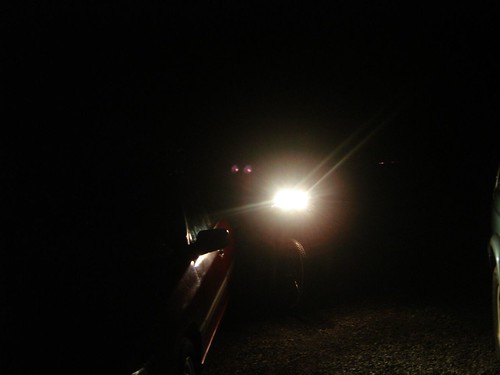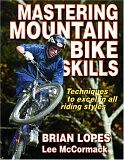This is a review of the 2004 Iron Horse Hollowpoint
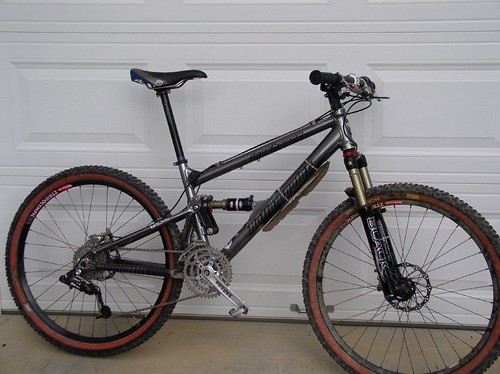
Background:
I've been a hardtail rider for over 15 years. This year I finally decided to give full suspension a shot. My emphasis is XC/XC race. Thought the trails I ride (SW Virginia)such as
Brush Mountain Poverty Creek are anything but buffed singletrack. These are the epitome of what the marketing term Aggressive XC is.
On practically a whim I bought a 2004 Salsa Caballero.
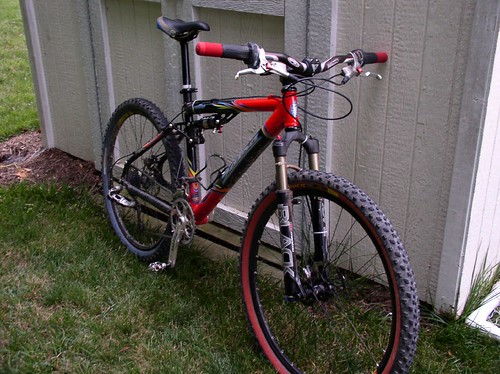
This was an extremely light (5.5lbs frame/shock) Scandium frame with 4" of rear suspension. It was a great introduction to FS for XC but I was disappointed with the rear bob. The rear bob felt like I was being robbed of some power and it bugged me. Sold it shortly after.
But having been enlightened to Full suspension I searched for my next FS frame. This time I spent significantly more time researching the forums on online reviews. I spent hours researching discussion forums such as
Mountain Bike Review and
Ride Monkey. When you peruse the forums you have got to be a little careful to take everything you read with a grain of salt. Any posts with "heh, heh, or 'prolly' should be disregarded as a 15 year old, and one should look for patterns in posts and not for those absolute "oh this is the best bike every built", or "this bike sucks, I have no explanation why, it just sucks". And people who post on the forums are just passionate people. Especially in the
Manufacturer Forums.
After reading the forums several brands came to the forefront as being the best XC race frames. Turner and Titus were among the top contenders. Of course those are also boutique builders with price tags of $1000-$2k for a frame set alone, even used the prices are fairly high. I'm cheap, so these were out of the question for the time being.
One brand that really piqued my interest and came up over and over as a great pedaling bike was
Iron Horse They had a great reputation on the boards for customer service, great value for the $, actually posting on the boards, and for licensing the
DW Link suspension design developed by Dave Weagle. And the posters on the
Iron Horse Forum were helpful, and passionate about the brand really believing in the design and the company.
I read every single web page that google could find on the DW-link. Even cached pages such as this
Rider reviews of DW link that is no longer accessible. Also two very major independent boutique builders:
Ibis and
IF chose the DW link as the suspension system for their only full suspension designs.
I was struck by a few things about Dave Weagle.
1) He himself posts on the mtbr and other forums under the name
_dwThis carries enormous weight to me. How many engineers do you think Cannondale or Specialized have? How many of them post on the boards. We have
discussed before the upside/downside of BLOGS and forums with regard to bicycle marketing. But it just carries a lot of weight with me that the designer of this suspension systems posts on the forums, a place where you take your life in your own hands to be prey for the stupid and passionate idiots of the world.
2) I liked a lot of the things he said in interviews:
Descent World interviewPink Bike InterviewMost importantly he doesn't hype the suspension as the greatest thing since sliced bread. But places the decision squarely in the hands of the consumer by saying that We will decide what works and doesn't work. That's right, power to the people.
Th DW Link suspension design has a reputation for being one of the most efficient peddlers out there

Which fit the criteria I was looking for
1) Efficient pedaling
2) good value
3) Not too heavy
4) 3.5-4" of rear travel
The Hollowpoint is a real interesting bike. It was designed to do double duty as an XC race and Trail bike. The linkages are adjustable from 3.75" to 4.5", and forks from 80mm to 130mm can be used. I ended up corresponding with a pro racer from the NE who had raced on a Hollowpoint and their new XC based Azure. One thing that stood out in his description of the Hollowpoint was doing drops of 6' one day, and then changing the wheelset and then winning an XC race the next.
IH actually discontinued the Hollowpoint in 2005, and split the bike into two different frames. the MKIII for trail and the Azure for XC.
Also the HP can be found for so cheap and the Azure is brand new. If you are looking for an HP know that North Face licensed Iron Horse to build some bikes for them and sold them under their label in the Kichatna Model. Same exact bike, but you can find them much cheaper sometimes.
There were some warranty issues with 2003 frames that originally came with 5" linkages. Several broke but IH replaced all under warranty. It sounded like a small batch had problems, as several had no problems at all with the 5" linkages. But IH released new linkages that made the travel 4.5" max and adjusted to 3.75"
I ended up buying a used 15" with a swinger air shock for around $450. Keep in mind that a Racer X goes for $2k new maybe $1000used.
GeometryThe geometry is skewed towards XC with a 71degree head tube. Thought the seat tube is a slack 71.4degrees as opposed to the industry standard 73. This really throws off the effective top tube length, as it 'artificially' elongates it. You have to scoot your saddle forward on the rails to get into the same position if it was a 73 degree. So it all works out in the end, but I don't like how it looks from an aesthetic viewpoint.
So I wish IH had speced it with 73 and it looks like they have changed that for all their 2005 and 2006 bikes.
the buildI'll try to limit this review to the frame itself and not draw too many conclusions from the build. I built the frame piece by piece and you can read the details here:
Current Hollowpoint Build.
Some notes though:
On the 15" frame the triangle is really really tight with the suspension linkages.
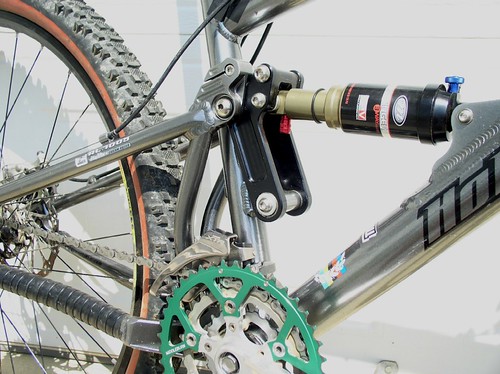
There was no way my SRAM Xgen front der. was going to work, and and XTR didn't work, so stick with the stock front der. (XT) unless you have a larger size that might have more room
The headset is an internal type. So I stuck with the stock FSA that came with it. So far no problems and the fork crown has a split in it making it real easy to move from fork to fork. But honestly, I wish they had just speced a normal headset rather than the internal kind. There just isn't as much choice for the end user for internal headsets yet.
The seatpost is 27.0. Why it is not 27.2 I don't know. Lame in my opinion.
I have a 107mm BB with a Square taper on there, and I think that is too short. I am going to try a 113mm to see if the shifting improves.
The front bottle cage is on the underside of the top tube. Real PIA to get a bottle in and out. I only just put a cage on to use a light battery and haven't been using it with a bottle. But given the frame design this was the only place for it.
The rear chainstays are wide and beefy. And you don't get the kind of chainsuck like you can on a typical bike. But the chain can climb over the edge and get jammed. As I have done.
Weight:Everyone always wants to know how much does it weigh. I am a total closet weight weenie. And do not even tell me that you don't think about how much things weigh when you consider a purchase for your bike. Weight is a hugely debatable issue. A lot of it is just marketing hype and these benchmarks in weight that have been pulled from the air: 25lbs for FS/XC, 30lbs for trail, 22lbs for hardtail, 17lbs for road bike, etc.
When you really do the physics at places like
Analytic Cycling you might be surprised just how little difference a few pounds makes over the course of a ride.
That being said, weight is still important whether it is purely perception or reality. And unfortunately when you design a bike to do double duty as a trail and XC bike it probably isn't going to be as light as true XC racer.
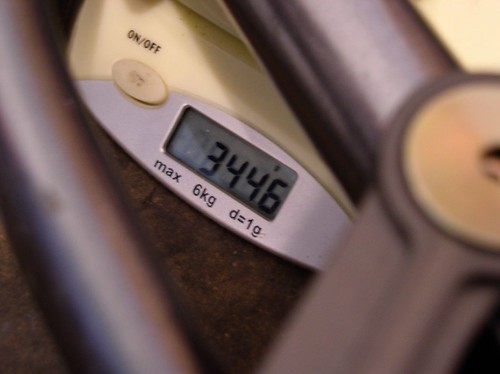
The frame w/shock/headset cups came out to be 7.6lbs. Pretty hefty in the royal scheme of things. My build was pretty light especially the wheels and total weight came out to be 27.2 lbs.
The weight is a NON-ISSUE for the most part. The only times it becomes apparent are
1) during the parking lot test when you heft each others bikes and oohh and ahh,
2) racking the bike
3) hike a bike sections.
4) when I turn pro it might be more of an issue.
As soon as you throw a leg over it, the extra 2 pounds compared to a feather weight just disappears.
Rear Shock DiscussionMy frame came with a 2003 Swinger Air shock with SPV
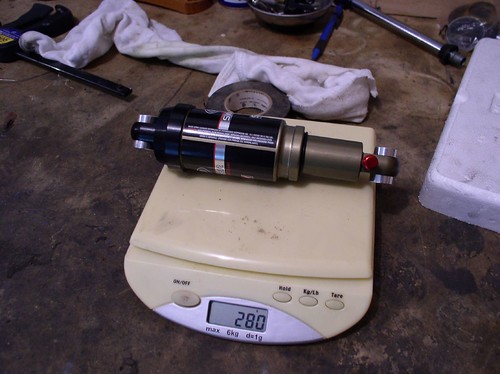
It's sort of ironic that they spec a platform shock on the higher models, as the DW link is so good at filtering out pedal bob that it actually doesn't NEED platform. In fact many say the platform detracts from the DW link experience.
Iron Horse states that they spec platform shocks NOT for their low speed compression capability but for their ability to reduce harsh bottoming out. And they recommend airing up the SPV or CVT in the 5th element to the absolute minimum. In fact those frames that come with 5th Elements have custom platform valving minimizing the platform as compared to stock.
Several hollowpoint devotees deliberately put on Non platform shocks such as the Cane Creek Cloud 9 or the AD-12 and love the performance.
 Set up
Set upSetup of a DW link shock is of utmost importance. I mean it is really really important to spend a lot of time to dial it in. Because if you don't it isn't going to ride well at all. The design requires a fair amount of sag as compared to other FS/XC bikes. The idea is that when you are sitting on the bike you are sitting INSIDE the suspension, and then the suspension is free to track the ground as best as it can.
There is an ideal suspension sag that is unique to the individual. It is at this point where the shock will move very very little on flat ground, but will then soak up any bumps it comes in contact with. It can be hard to find this point because sometimes tuning the air spring goes counter to what you believe. If you see the shock moving under your pedal stroke, the first thing you think about is adding more air, yet with a DW link this can be the absolute wrong thing to do and it will bounce even more. More often than not you need to remove air and it will settle down.
But there will be a point probably between 25%(9.5mm) and 33%(12.6mm) sag where you will find the sweet spot. Right now I have it set in the 3.75" setting and have 50psi (minimum) in the SPV chamber and 120 in the main air chamber and am getting around 11.5mm of sag ( I am 135lbs with gear)
One of these days I think I am going to ride into a tree from looking down so much at the shock to see what is going on. I've found that on flat paved ground with a high spin it does move a little-1-2mm. But on the trail it seems to settle down. Especially when climbing on smooth ground. It doesn't move until the rear wheel hits something like rock or root and then Skoosh the travel just takes it up. Pretty neat. Until I run off the trail or into a tree that is.
The Hollowpoint seems to be rearward weight biased. And getting the front fork to sag as much as it needs for balance can be difficult. I am using a 2005 Black Super Air
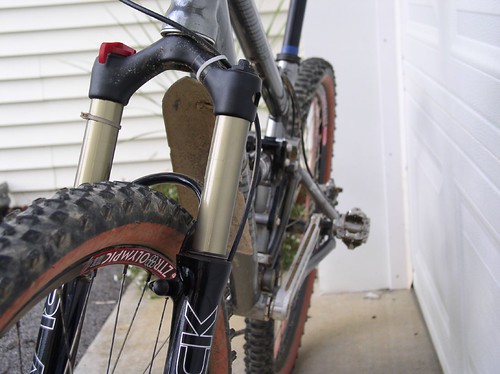
And it had been a challenge to find the best settings for it.The Black is a combo coil/air spring and putting in the light rider spring kit helped. I've read about others that have to go with lighter spring than their weight may normally require.
Travel settingsIt is fairly straightforward to change the travel settings.
This is what short travel (3.75") looks like:
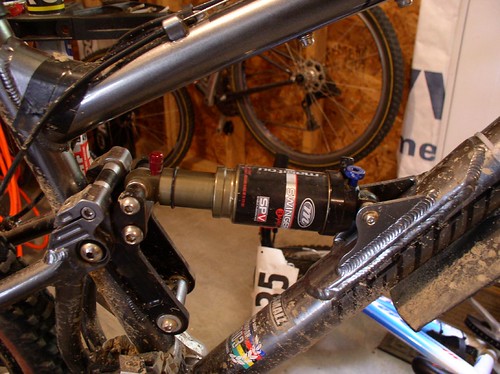
And long travel looks like this:

What I have found is that the both have great pedaling efficiency. And that the long travel mode actually climbs better on loose technical terrain as it doesn't slip as much as the short travel mode. But that when climbing through rock gardens like this:
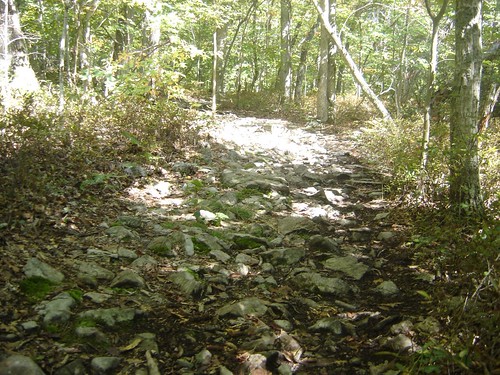
The short travel mode felt faster and more efficient.
In short travel mode it seems to blow through the rear travel once the platform has been breached. I've heard this complaint in general about the Swinger and a different shock may perform better. It doesn't seem to do this as much in long travel mode.
But in general short mode feels tighter and more balance with the 100mm fork I've got up there. But long travel mode, as can expected downhills better.
My current feeling is that if you want to clean everything, and fly on the downhills, long travel mode is better, but if you want to go-go-go fast and tight then short travel mode is better.
Overall ImpressionsThe DW link suspension really is all they say it is. There is just something about the feel of it that seems to will me forward. Where the Salsa felt like it sucked the momentum out of me sometimes, this just seems to take my energy and transmit it forward. Especially on the climbs.
The only terrain where it doesn't shine above a hardtail is smooth flowing single track.
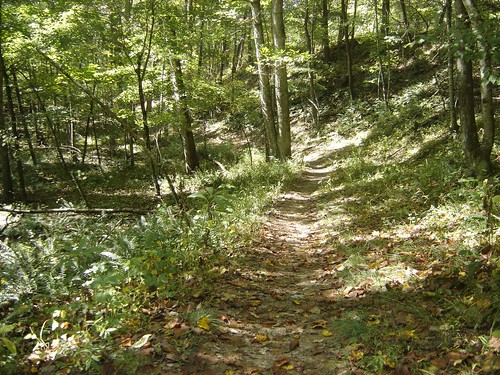
the HP can certainly hold it's own here, but a good hardtail is made for this type of terrin. But any other terrain from this:
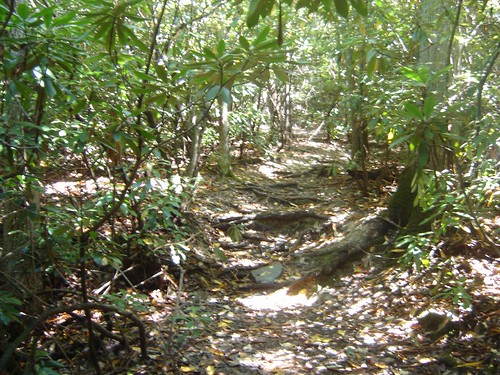
to this
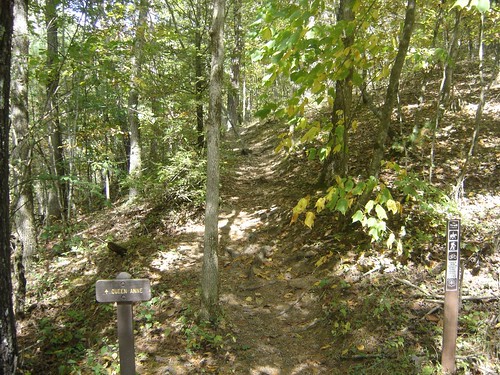
And the HP just comes alive.
Of course compared to a hardtail it can downhill like a rocket. I have been riding some local downhill much much faster than I used to.
Depending on how you set it up it can rail on the single track too. I've got a 100mm fork with short stem and it steers very fast. An 80mm fork can be speced but I worry about hitting more things with the pedals at that height.
*EDIT: 1-12-06** I am testing a BLACK 80mm SPV on their right now, so far I LOVE it. much better climbing and in pedaling single track, w/o too much loss of downhilling capabilities ***It does have loud chainslap though I think due to how the suspension works. And going through V dips feels a little weird, sort of like there is a delay in the pedaling while the suspension is fully activated.
Over all PROs-great great value
-efficient pedaling
-superb downhiller
-made for technical riding
-backed by a good company
-adjustable travel
cons-Slack seatube
-27.0 seatpost spec
-internal headset spec
-water bottle placement
-tight front triangle with limited front derailleur possibilities
-chain slap
-weight
-rearward weight bias
ConclusionsI am quite happy with the Hollowpoint, and am now fully devoted to the DW Link cult. Given how reasonably priced they can be found on ebay and classifieds, they make a great value for anyone looking at full suspension.
My current priority is XC racing and aggressive XC riding. The HP is definitely an aggressive XC bike, but I think it is slightly overbuilt for what I really want. XC racing speed is where I'm at, yet at the same time, it is SO much, and I mean SOOO much fun to cruise around in the long travel mode, especially on things like this:
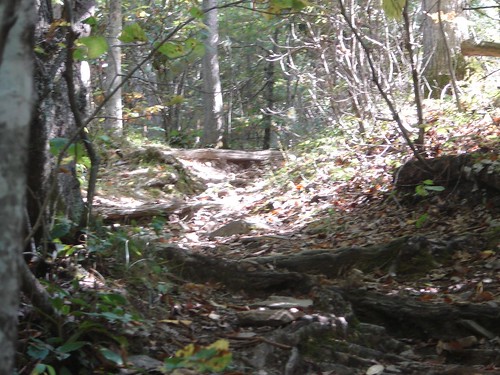
. It is a wonderful trail type bike that can actually climb very well. I've cleaned some super steep super loose stuff that I've never come close on my hardtail.
But I think I am going to keep my eyes open for a closeout Azure later in 2006 which from everything I read is a Hollowpoint on a diet and with a rocket booster built in.
edit: 5-5-06
Put a 100mm Minute on there. Rides great.
Every time I get on this bike I love it more. It is the most incredible climber I've every ridden.
